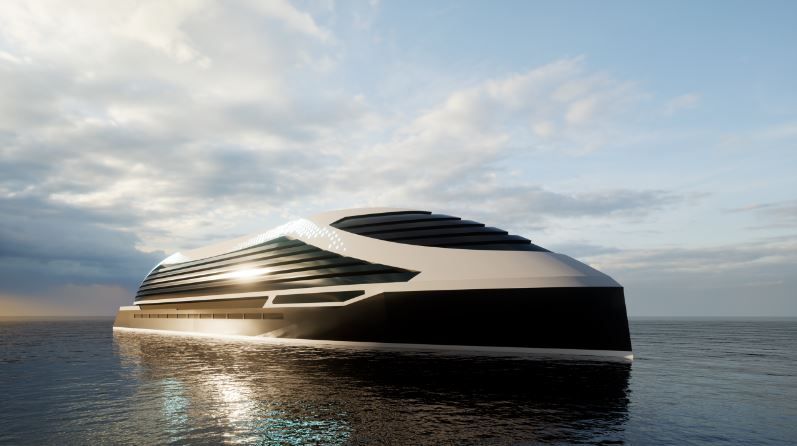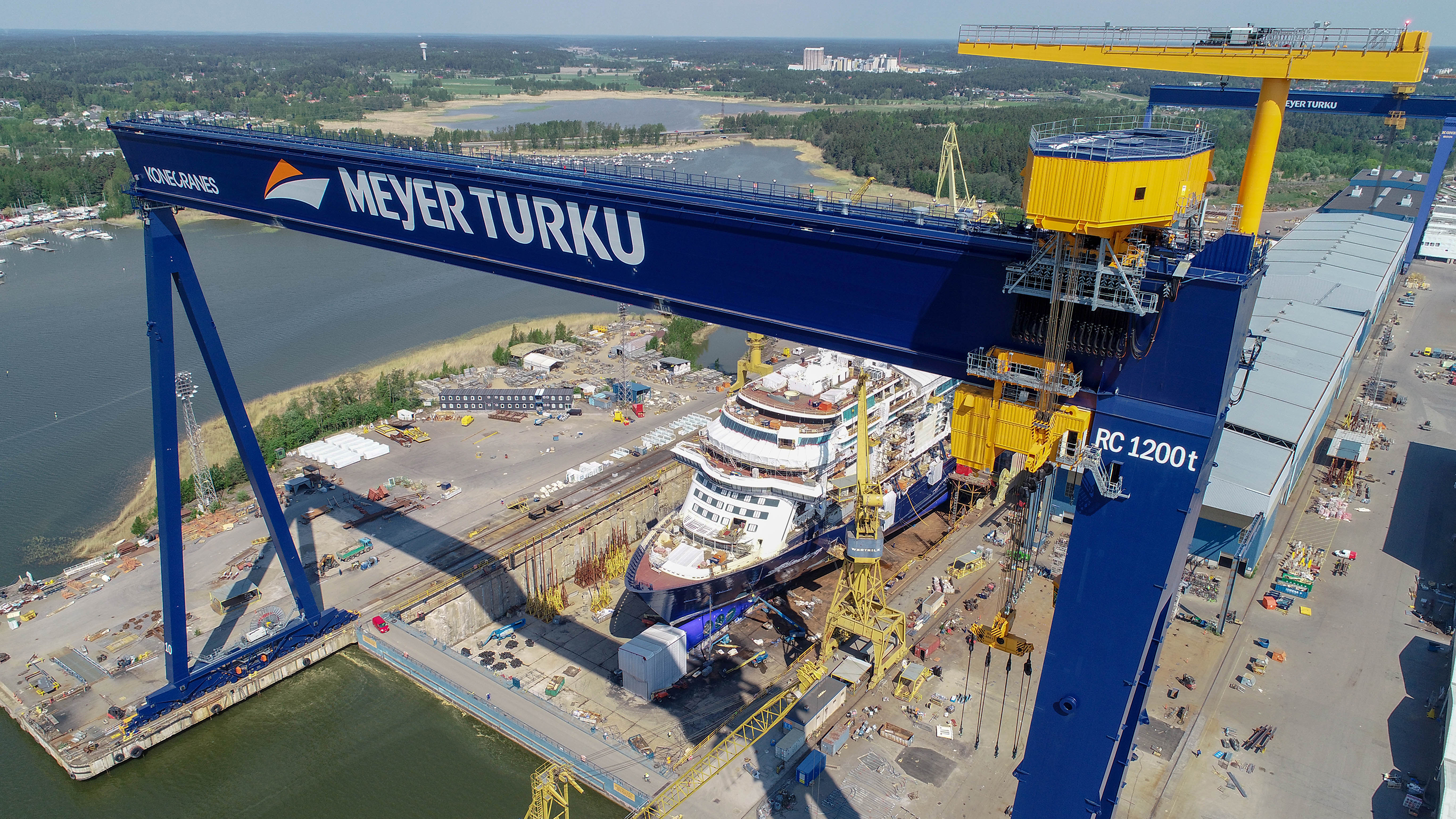The Finnish maritime industry plans to win the race in ship development

New energy sources and reducing the environmental load of ships are key when the Finnish maritime industry seeks an advantage over its competitors. Industry giants Meyer Turku and Wärtsilä are driving the development work. Reducing shipping's greenhouse emissions is also important to Finnvera, which is committed to the Poseidon Principles, which follow the climate impacts of ship financing.
New technological solutions are accelerated not only by the tightening environmental regulation of the shipping industry, but also by cruise lines' anticipation of passengers' demands. The increased price of energy creates even more schedule pressure.
Tapani Pulli , vice president of shipyard company Meyer Turku, describes the current situation as a race. The winner is the one who invents and knows how to apply the best technologies for customers the fastest.
Meyer Turku operates as a locomotive company in Business Finland's NEcOLEAP financing program, where climate-neutral and sustainable solutions are developed for cruise ships.
- We have been doing development work for decades, so this is not new for us. Our first goal is to develop a climate-neutral cruise ship concept by 2025. Secondly, shipbuilding at the shipyard should be carbon neutral by 2030, Pulli lists.
The shipbuilding industry is significant in Finland, and half of Finnvera's export guarantee operations' liabilities of approximately 22 billion euros are related to ship financing. Finnvera monitors and reports the climate impacts of its shipping-related financial responsibilities through the international Poseidon Principles. The principles comply with the goals of the International Maritime Organization (IMO) to halve shipping's annual greenhouse emissions by 2050 from the 2008 level.
Hundreds of partners are involved in the development work
The cost estimate of the NEcOLEAP project is 160 million euros, of which Meyer Turku's share is a quarter. The shipyard company is looking for 1,500 partners, from startups to companies already operating in the maritime cluster and from research institutes to universities.
- We want to make a big leap towards doing things based on the ecosystem, where the end result is completely new innovations. The ecosystem offers even a small company an excellent platform to utilize crowd power, says Pulli.
The research and development work is divided into four areas: the cruise ship, the operation of the shipyard, the introduction of smart technologies and the professionals of the future.
It is possible to use artificial intelligence better than at present, for example, in planning the route choices of ships. The shipyard, on the other hand, can take several small steps to reduce environmental emissions. One solution is to think about internal logistics, such as replacing forklifts with non-fossil means of transportation.
- The development of a cruise ship is divided into three different parts: the ship's hull, machinery and navigation, and the hotel side. Everyone has their own projects, says Pulli.
According to him, cruise travel may change in the near future so that the ship is more of an actual destination. The range of cruise services expands with the help of different themes. At the same time, the ships' speeds decrease, as there is no need to reach the next port at the current pace.
The Finnish product development environment is an excellent breeding ground for new innovations. Companies cooperate with each other, and universities and research institutes are also involved in the work.
Zero-carbon fuel, the solution of the future
Wärtsilä's product development in Finland is largely based on promoting engine and fuel technologies. The company has global development projects related to battery technology, ship navigation and power plant solutions.
- Ship engines running on zero-carbon fuels will be ready in 2030. In addition, we have set another top-level goal, according to which our own operations will be carbon-neutral at that time, says Wärtsilä's director responsible for sustainable fuels and low-carbon Mikael Wideskog .
Zero-carbon fuels mean ammonia and hydrogen, while methanol is a carbon-neutral fuel.
According to Wideskog, the development path is such that the use of liquefied natural gas, or LNG, will increase in ships until 2035. During that time, the ships will also switch to using mixtures consisting of fossil and carbon-free fuels. Zero-carbon and carbon-neutral fuels can be switched to to a greater extent when they are widely available.
- Fuel consumption can also be reduced by reducing friction in the ship's hull, navigation and sail solutions, he lists.

Shipbuilding at the Meyer Turku shipyard.
Financing plays a big role for the entire cluster
Both Wideskog and Pulli consider the Finnish product development environment to be excellent ground for new innovations. Companies cooperate with each other, and universities and research institutes are also involved in the work.
- Here in Vaasa, there is a strong energy cluster that develops solutions for both land and sea. On the other hand, there is a large cluster of shipyards around Turku. We all have a good opportunity to work together, says Wideskog.
Pulli also highlights the availability of financing, which is especially vital for the capital-intensive shipyard industry.
- Finnvera's role is essential, as financial instruments are of central importance to our business. The playing field must be equal between competitors. Now it is, he says.
